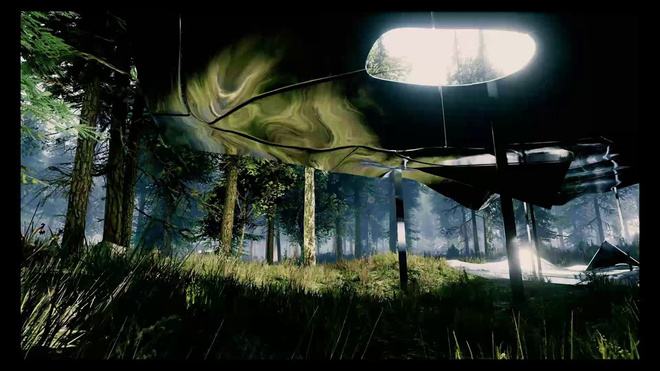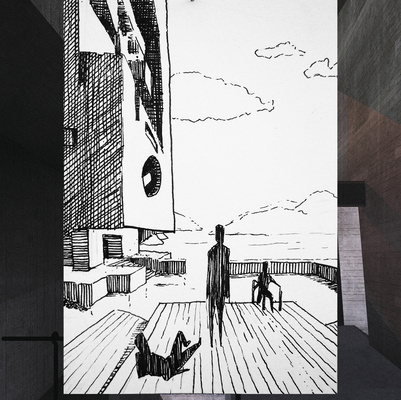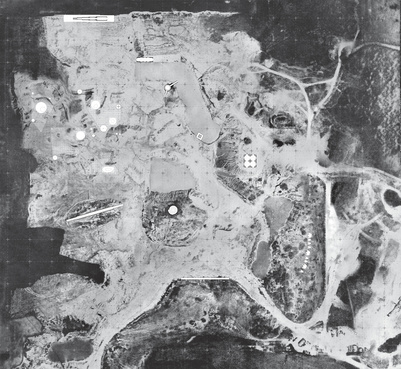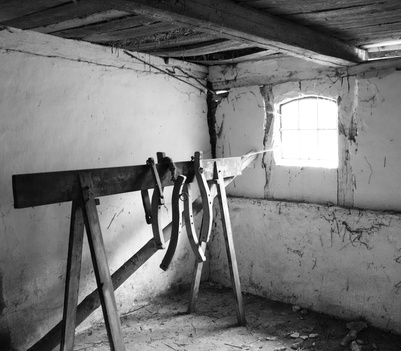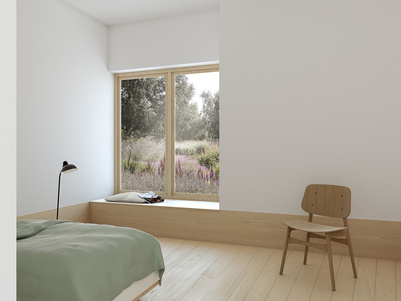CABIN/WOODS
CABIN/WOODS is an architectural thesis project that uses film to communicate a series of architectural interventions that explore the intersection of culture/nature as a productive friction. The film itself is also an experiment/exploration of the of computer game engines for the creation of animated film & their potential as an architectural tool.
The cabin in its modern, Scandinavian form is attempted negotiated, formally exploring cabins that neither attempt a nostalgic state of the primitive, nor succumb to a hi-tech gadget-lust. Simultaneously they attempt an exploration of intimacy: the modern cabin would seem to labor towards a purely aesthetic experience of nature. I.e through seeking to become impenetrable towards any agent of nature attempting to traverse its threshold. Nature may be experienced when outdoors, but within the safe confines of the cabin the situation becomes at times hard to distinguish from a generic urban dwelling. In fact it has become ever more common that the cabin actually is built larger & with greater comfort than the owners urban dwelling.
These cabins attempt to re-work the spectrum between hermetic cultural shelter and the inescapably exposed natural condition, shifting the cabin so as to underline the borderland between the two. Drawing from a vocabulary sourced from the typical ways we inhabit the forest, from seeking shelter below an overhang to the cabin itself these cabins attempt to grasp the ephemeral of the body seeking shelter in the woods: a frail, moving body seeking to organize its surroundings so as to safely rest. The cabins form therefore is not that of a ready shelter, but of a recognizable potential.
The act of erecting a structure is primarily a reorganization of raw materials sourced from our environments, but also (often with hints of forcefulness) the occupation a physical sliver of territory: one that from that very moment of occupying becomes a contested area. If we build a cabin, but do not maintain it, it naturally decays and is re-occupied by weather, flora & fauna. If it is maintained, then it emits a resistance to the forces that surround it. Either way there is a friction between the two: the organized structure and the non-organized state.
Often this is an intersection and friction that we perceive as negative, “one comes at the cost of the other” etc. Our environmental discourse orbits primarily around the friction being a negative symptom of our climatic issues. I believe that this leads to our neglecting a potential source of design vocabulary that can act as a productive spatial motor. The interventions of this project seek to inhabit this friction.
After a lengthy design process the following, tentative observation has been made: in order to inhabit the friction productively the introduction of an intervention must be the introduction of an alien third party, that is to say a structure/organization that whilst familiar (formally) to both culture & nature embodies this friction. In the case of this project produces a field that becomes difficult for both nature and culture to inhabit. The cabins in the woods are not neutral structures, yet their agenda is reserved from their inhabitants, they do not clearly serve any one function. One can, with difficulties find shelter below the roof or on top the base, but both have their compromises and both irrevocably intertwine culture and nature. It is impossible to have a purely natural or cultural experience within the border of these fields, they impose a magnification of our experience of friction and demand constructive interaction.
The woods are an imaginary context for these interventions, they attempt to channel the imagery associated with Scandinavian forests yet remain fictional so as to avoid site-specific discussions that are outside the scope of the experiment. In order to retain a certain degree of realism, the forest is based up a 20x80m 3D scan of a typical piece of Scandinavian forest that I scanned so as to have some initial resistance and scale reference.
The interventions are grouped into four: three different cabins & a series of sculptural objects that expand and introduce the field. The cabins represent three different scales, capacities (the smallest cabin houses but one person, the medium 3-4 & the largest 8-12) & complexities (e.g. the largest cabin is entirely sculpted by the terrain it sits on, the medium with an adapting base and the smallest exists formally independent of it’s immediate topology).
The roof and base of each cabin are mirror images of each-other. Their plan is a distortion of the typical plans wherein the typical functions have either been completely dissolved or replaced by abstractions that move away from the clearly structured and towards a more primitive condition: E.g. the re-enacted bivouac that is reflected in both base & roof, the extrusion & depression of the surfaces (and their eventual relationship to the terrain that surrounds them), the curtains that allow flexible re-enactments of delimited internal space etc.
By shifting the roof & base in relation to each-other they begin to demarcate a field on the two planes, rather than a singular volume. The roof reflects the forest floor whilst the base reflects the forest canopy above it, intertwining the two planes into a single structural field. It is this field the frail body encounters in the woods, both in seeking shelter in the cabins, but also in the variety of sculptural elements it discovers in the area surrounding the cabins. The sculptural elements, be they re-enacted trees cut off at the same height as the cabins, or a forest pond lifted upwards towards the forest canopy, further expand the field & logic the cabins initiate. Smoke rises, snow falls. Fleeting moments of density and mass exist between the two layers.
The choice of material for the cabins is a chromed metal, preferably aluminum, that plays two complementary roles: Firstly, the use of metal in this manner ensures a longevity of the structure so as to avoid a premature degradation into a ruin-state (being difficult for natural forces to decay and disrupt & for humans to wear down). Secondly the uncanny nature of the mirror-like surface in the woods helps underline that the cabins are a formal third party, a configuration of natural materials that is almost unrecognizable as such.
The use of curtains, rather than walls, allows for a far more flexible (re)configuration of space according to needs of those seeking shelter. This flexibility also enacts a compromised situation upon the inhabitants, providing limited actual shelter & largely denying the comforting sensation of a solid shelter. Additionally the curtains two chosen materials, a highly reflective metal foil and a transparent plastic underline this further. The greater quantities of transparent plastic give shelter, but leave the occupants visible from afar (especially at night). Creating a sense of exposure that conflicts with an experience of shelter. The metal foil, whilst opaque and seemingly solid, rustles and crinkles in a manner similar to the tent fabric flapping in the wind: it reminds us acoustically of its flimsiness. Additionally the reflective quality intensifies phenomena such as sunlight, camp-fires & artificial lights.
Together all these aspects lead to an unavoidable intertwining of culture & nature within the field of the cabin. Neither one can escape the other: always there is an inherent compromise that that creates friction.
The film itself is structured as a series of clips that form an experiential narrative as if they were a series of experienced moments, or recollections. To move beyond a mere documentation, the cabins and their surroundings are shown through a variety of temporal scales, from real-time, to twenty minutes passing for each minute of film or 120 minutes per minute film and so on. The sound that accompanies the film is similarly distorted and shifted. The format is that of the abstract narrative, an ambling journey through a field of sculptural interventions and cabins. Spatial moments intermingle with traces of human & animal life as the cabin & woods intersect, ever negotiating as the natural & cultural elements fluctuate in time.


